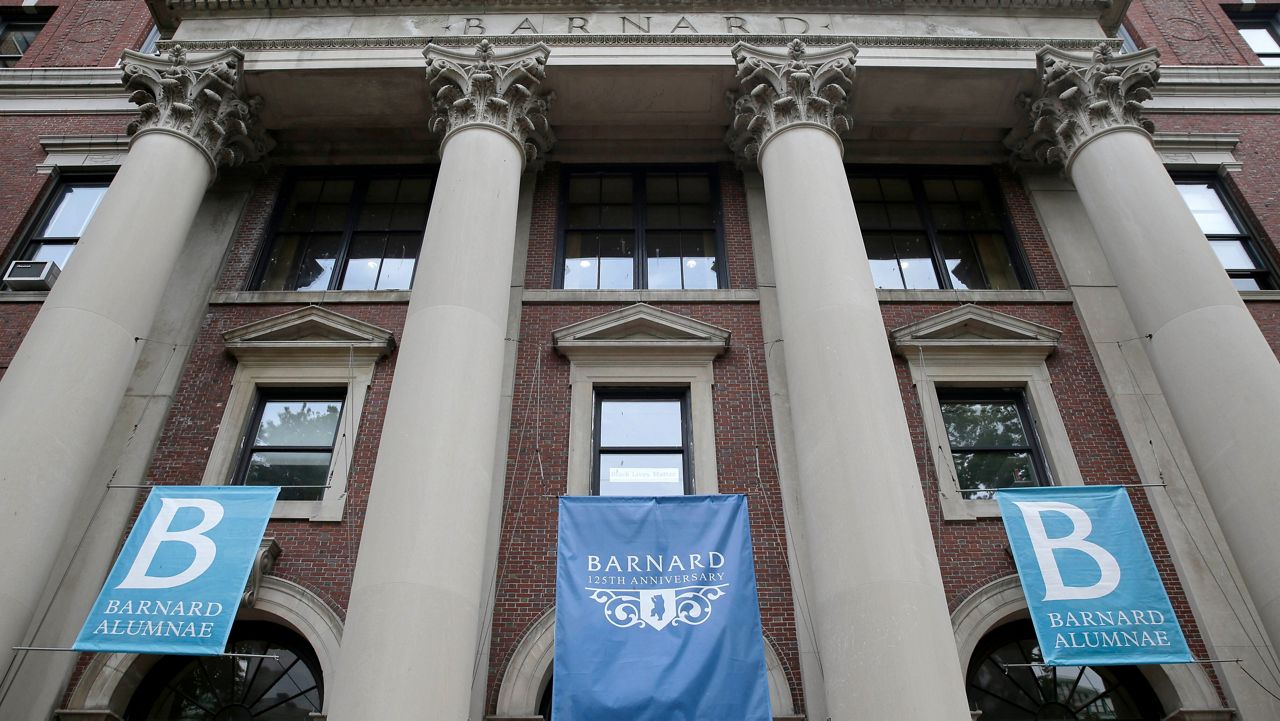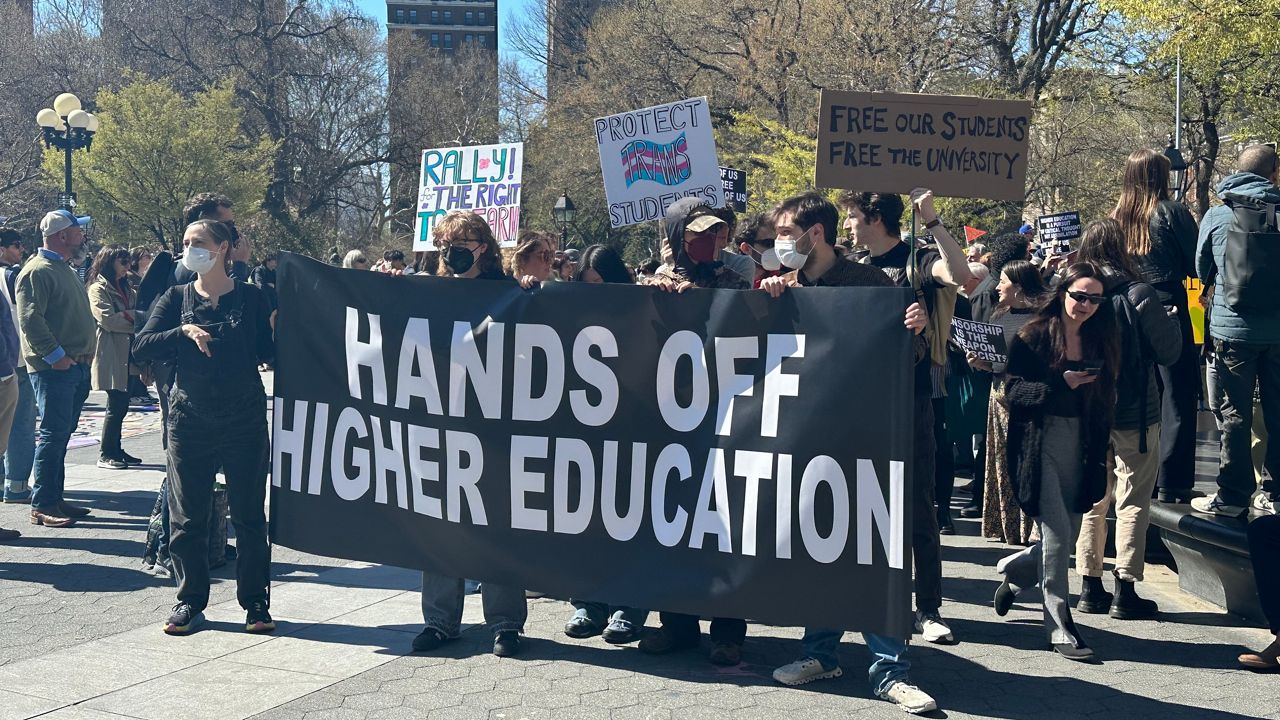Mariangel loves to play chess. She started learning last year, thanks to an after-school club.
“At first, I didn’t really know anything about chess. I really only knew the pieces. But my teacher helped me learn a little more about chess,” Mariangel, a sixth grader, said in her native Spanish.
Mariangel is one of 33,000 migrant students who have enrolled in public schools since the summer of 2022. She came to New York that October, and like many of her newly arrived peers, her journey from Colombia was traumatic. At the border, she and her parents were separated from her two older siblings.
“It was really hard. And I was really scared when they separated me from my siblings,” she said.
It was a difficult, frightening journey until they were all reunited in New York, but it was a journey her parents felt they had no choice but to take.
Alexandra Gomez and Francisco Vargas once ran a nonprofit that defended the rights of field workers in Colombia. They say one day, their taxi was ambushed by armed men on motorcycles. They were thrown to the ground and had weapons pointed at their heads. The men said they knew where their children went to school, their schedules.
“They already knew my whole story,” Alexandra said in Spanish. “It was like they were a relative who had known me very well. Then they got on their motorcycles and told me, ‘If I were you, I would leave the country. We don’t want to see you again. Here, or anywhere.’”
They traveled through Mexico and crossed the border from Piedras Negras to Eagle Pass, Texas, on foot to seek asylum, a process that is ongoing. When they made it to New York, they applied for shelter, and were placed in a midtown hotel.
As her mom recounts the story, Mariangel quietly cries. It’s hard for all of them to talk about.
One thing that’s helped is school. She went to P.S. 11 last year, and this September started middle school at 75 Morton.
“This has served as therapy, because she feels very good,” her mother said. “And she always arrives happy.”
Across the city, schools have rallied around children like Mariangel, often with little notice and few resources to spare.
NY1 first visited P.S. 33 in Chelsea last October, shortly after 60 new arrivals enrolled. About 80% are still there, and dozens more came after them.
“From day one, any student who registered, there’s just a lot of enthusiasm for being in school, and that hasn’t changed,” Cindy Wang, the school’s principal, said.
Last year, P.S. 33 scrambled to establish transitional bilingual classes. This year, they’re taking a different approach, putting them in mainstream classrooms with bilingual support, like an integrated co-teaching class of second graders, who were learning in two groups, at different levels.
“Some of the students who come in do not — aren’t strong in their native language,” Wang said. “So a lot of the needs that they still have, while they’re still in second grade, are actually more foundational skills.”
Geraldine Harvey has been teaching for more than thirty years. Typically, she would have two or three English language learners a year in her kindergarten classroom. This year, it’s 14: more than half her class.
With the help of English as a new language teachers, paraprofessionals who speak Spanish, and a bit of Google Translate, there have been breakthroughs. The day NY1 visited, a boy who had been apprehensive finally wrote letters for the first time.
“He’ll scribble. I have to hold his hand often, but he did this on his own today, so it was very emotional, I have to say. It was exciting,” she said.
Still, Harvey says schools like hers need more resources like more bilingual paraprofessionals.
“You really need the child to hear their language and understand it’s that entry point in,” she said.
Sometimes it’s a kid who tries to fill that void for another, like Kamila Terc, who speaks a bit of Spanish.
“I know like cálmate, like, que pasa,” she said.
She works hard to understand the new students and to befriend them.
“Yesterday, one of the students that speaks Spanish, she was crying because she came from South America and it’s very hard for them,” she said.
“For so many families, for so many students, school is the one source of stability when everything else is unstable, unknown, ever-changing,” Jennifer Pringle, project director at Advocates for Children, told NY1.
But soon, that, too, may be upended.
Mayor Adams has announced plans to limit some family shelter stays to sixty days. Families will either need to move out, or be moved to another shelter. Under federal law, homeless children have the right to remain in the same school, and be bused there.
“No child is going to be displaced or their school is going to be interrupted,” Adams insisted during a press conference on Oct. 16.
But the city already struggles to staff the school bus routes it currently has. And if a family is moved a borough or two away, the school bus or subway ride back to their old school may be so difficult that families feel they have no choice but to change schools.
“I think that is a right in name only. I think it’s magical thinking that kids will be able to stay in their same school under those types of circumstances,” Pringle said.
Mariangel’s family hasn’t received any notices about moving, but it’s a fear that hangs over them, especially because her schools have been so welcoming.
“They gave us this affection and love, which is so important, that we entered the school feeling like a normal member of the community,” her father, Francisco Vargas, said.
And she’s making great progress at 75 Morton. Asked in English what her favorite subjects are, she replies in English: “music and math.”
More than a year after violence forced them to flee home, they say their new home, New York City, has been a blessing.
“Here in the United States, it is a country that believes in democracy, that protection of human rights,” Francisco Vargas said. “That’s why we are.”






_CGPK_CUNY_Student_Protest_Encampents_2025_CG_134055132_345)

_DNT_Columbia_Protest_CLEAN_FOR_APPROVAL)
